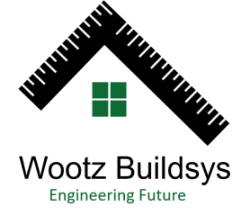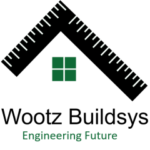
In the ever-evolving landscape of construction, innovation is the key to progress. One such innovation that has been gaining momentum and is poised to shape the future of construction is the utilization of Pre Engineered Building components. These components, also known as PEBs, are revolutionizing the way buildings are designed, fabricated, and erected. The reasons why Pre Engineered Building components are set to play a pivotal role in the construction industry’s future.
1.Efficiency in Design and Fabrication:
Pre Engineered Building components are precisely designed and manufactured off-site in controlled environments. This streamlined process eliminates inefficiencies and reduces the construction timeline significantly. With computer-aided design (CAD) and advanced manufacturing techniques, PEBs offer unparalleled accuracy and consistency in every component, ensuring seamless assembly on-site.
2.Cost-Effectiveness:
Traditional construction methods often involve high labor costs, material wastage, and prolonged construction schedules. In contrast, Pre Engineered Building components minimize labor requirements and material wastage due to their prefabricated nature. The controlled manufacturing environment also allows for better cost management and optimization, ultimately leading to substantial cost savings for builders and developers.
3.Versatility and Customization:
Contrary to the misconception that Pre Engineered Building components offer limited design options, they actually provide a high degree of versatility and customization. From industrial warehouses to commercial complexes and even residential structures, PEBs can be tailored to meet various architectural and functional requirements. Builders have the flexibility to choose from a wide range of profiles, finishes, and accessories to achieve the desired aesthetics and functionality.
4.Structural Integrity and Durability:
Pre Engineered Building components are engineered to meet stringent quality standards and structural requirements. These components undergo rigorous testing to ensure they can withstand the harshest environmental conditions, including seismic activity, extreme weather, and heavy loads. The use of high-quality materials and advanced engineering techniques ensures the long-term durability and structural integrity of PEBs, offering peace of mind to builders and occupants alike.
5.Sustainability and Environmental Benefits:
As sustainability becomes an increasingly important consideration in construction, Pre Engineered Building components offer significant environmental benefits. The efficient use of materials reduces waste, while the controlled manufacturing process minimizes energy consumption and carbon emissions. Additionally, PEBs are often designed with energy-efficient features such as insulation, natural lighting, and renewable energy integration, further reducing the environmental footprint of buildings constructed using these components.
6.Rapid Construction and Time Savings:
Time is of the essence in the construction industry, and Pre Engineered Building components excel in delivering projects on tight schedules. The prefabricated nature of PEBs allows for rapid assembly on-site, significantly reducing construction timelines compared to traditional building methods. This accelerated construction pace not only saves time but also enables earlier occupancy and revenue generation for developers.
7.Adaptability to Technological Advancements:
With advancements in technology and construction methodologies, Pre Engineered Building components continue to evolve and adapt. From incorporating smart building systems to embracing sustainable materials and construction techniques, PEB manufacturers are continually innovating to meet the changing needs of the industry. This adaptability ensures that Pre Engineered Building components will remain relevant and influential in shaping the future of construction.
Conclusion
Pre Engineered Building components are poised to revolutionize the construction industry by offering unparalleled efficiency, cost-effectiveness, versatility, durability, sustainability, and time savings. As builders and developers increasingly recognize the advantages of PEBs, they will undoubtedly become the cornerstone of construction projects, shaping the future of the built environment for generations to come.
Frequently Asked Questions FAQ’s
1. What are pre-engineered building components?
Pre-engineered building components, commonly known as PEBs, are structural elements of a building that are designed, fabricated, and assembled off-site before being transported to the construction site for installation. These components include beams, columns, roof trusses, wall panels, and other elements that are manufactured to precise specifications and then assembled on-site.
2. How do pre-engineered building components differ from traditional construction materials?
Unlike traditional construction materials that are fabricated on-site, Pre Engineered Building components are manufactured in controlled factory environments. This prefabrication process allows for greater precision, efficiency, and quality control. Additionally, pre-engineered components are designed to interlock seamlessly, simplifying the assembly process and reducing construction time.
3. What types of buildings can benefit from pre-engineered building components?
Pre Engineered Building components are versatile and can be used in a wide range of building types, including industrial warehouses, commercial complexes, agricultural buildings, recreational facilities, and even residential homes. Their customizable design and cost-effective construction make them suitable for various applications across different sectors.
4. Are pre-engineered building components environmentally friendly?
Yes, Pre Engineered Building components offer several environmental benefits. The controlled manufacturing process reduces material wastage and energy consumption, leading to lower carbon emissions compared to traditional construction methods. Additionally, PEBs can incorporate sustainable materials, energy-efficient features, and renewable energy systems to further enhance their environmental performance.
rimbatoto cabe4d


